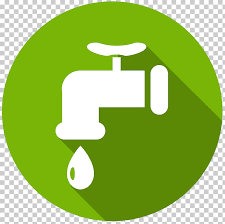EVANSVILLE, IND. – Starting in mid-May and continuing for about seven weeks, Evansville Water and Sewer Utility (EWSU) will temporarily switch the disinfectant used in the water treatment process to ensure the delivery of high-quality, safe drinking water to EWSU customers. During the switch, you may notice a slight change in the odor of your tap water.
The switch to free chlorine from the regularly used disinfectant chloramine will begin on Monday, May 16, and continue until Friday, July 1. Many water utilities use this standard preventive maintenance practice to keep water mains clean and free of potentially harmful bacteria throughout the year. EWSU switches disinfectants twice a year. The second switchover will be from August 15 through September 30.
Here’s what you should know
What is Chloramine?
Chloramine is a disinfectant used in drinking water to remove bacteria and viruses that can make you sick. It is made up of chlorine and ammonia. EWSU has used chloramine as the disinfectant in its water treatment process since 1999.
What is Free Chlorine?
Free chlorine is a slightly more potent disinfectant than chloramine, and it is used to remove more resistant bacteria and viruses that may be found in the water distribution system.
Why would EWSU Convert from Chloramines to Free Chlorine?
State drinking water guidelines recommend that utilities that use chloramine periodically switch to free chlorine for a while. The temporary use of chlorine willensure that a proper disinfectant level is maintained throughout the network of water mains and pipes that deliver your drinking water.
Free chlorine is a more aggressive disinfectant than chloramine. This temporary change in the water treatment process denies bacteria the ability to formresistance to the usual disinfection treatment process. Switching to free chlorine is a proactive step to maintain optimal disinfectant levels in the water distribution system.
As always, the drinking water will be regularly monitored to ensure that the water delivered meets or exceeds federal Safe Drinking Water Act standards.
Why Does EWSU Use Chloramines Most of the Year?
While chlorine is an effective disinfectant, chlorine alone creates byproducts that the U.S. Environmental Protection Agency regulates. These byproduct levels can be significantly and cost-effectively reduced through the use of chloramine. Also, chloramine has less smell than chlorine and remains in the distribution system longer to prevent bacterial growth. As such, chloramine is a better long-term choice as a regular disinfectant.
Will I Notice a Difference in My Water?
During this period, some customers may notice a slight change in the taste or odor of their tap water. Free chlorine may have more of a chemical odor, slightly like that of swimming pool water. Each customer has a sensitivity level to the taste or odor of free chlorine. Many detect no change at all. The mild chlorine taste and odor is typical and poses no health risk.
Are Free Chlorine and Chloraminated Water Safe?
Yes, chlorine and chloramine are effective and safe for people and animals for drinking, cooking, bathing, watering the garden, and other standard uses.However, precautions should be taken to remove or neutralize chloramine and free chlorine during the kidney dialysis process, when preparing water for fish tanks and ponds and businesses requiring highly-processed water. A dechlorination procedure optimized for chloramine removal will work equally well with free chlorine.
People and businesses that typically take special precautions to remove chloramine from tap water (such as dialysis centers, medical facilities, and aquaticpet owners) should continue to take the same precautions during the temporary switch from chloramine to free chlorine.
Most customers will not need to take precautions as the water remains safe to drink and is treated according to state and federal standards.
Information for Kidney Dialysis Patients
Just like chloramines, free chlorine must be removed from water used in kidney dialysis machines. EWSU has contacted representatives from the medical community to inform them of this temporary conversion. We advise dialysis patients to call their physicians or dialysis centers if there are any questions.
Information for Fish Owners
Like chloramine, free chlorine is toxic to fish. Therefore, fish owners need to remove chlorine, ammonia, and chloramine from the water before using it withtropical fish. Local pet stores carry water conditioners that remove chloramine and free chlorine. If customers have questions, we recommend contacting their pet store for information and detailed instructions.
Â





